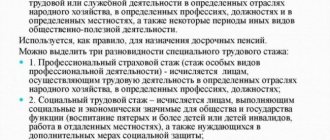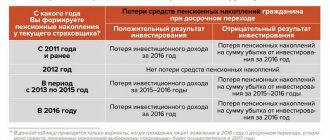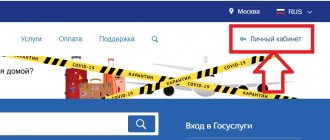Activities of the non-state pension fund
The non-state pension fund operates on the basis of:
- Federal Law No. 75-FZ dated 05/07/1998 (as amended on 08/03/2018) “On non-state pension funds”,
- other federal laws and other regulatory legal acts of the Russian Federation,
- as well as regulations of the Bank of Russia,
- Charter and Rules of NPF.
The non-state pension fund, in accordance with the NPF Charter, performs the following functions:
- develops NPF Rules;
- concludes Pension Agreements and Compulsory Pension Insurance Agreements;
- accumulates pension contributions and pension savings funds;
- maintains pension accounts of non-state pension provision;
- informs depositors, participants and insured persons about the status of pension accounts;
- concludes agreements with other organizations on the provision of services for organizational, information and technical support for the activities of NPFs;
- determines the investment strategy when placing pension reserves and investing pension savings;
- forms pension reserves, organizes the placement of pension reserve funds and places pension reserves;
- organizes the investment of pension savings;
- concludes agreements with management companies, specialized depositories, other entities and participants in relations on non-state pension provision and compulsory pension insurance;
- considers reports of the management company (management companies) and the specialized depository on the financial results of the placement of pension reserves and investment of pension savings;
- terminates contracts with the management company (management companies) and the specialized depository on the grounds provided for by Federal Law No. 75-FZ “On Non-State Pension Funds”;
- takes measures provided for by the legislation of the Russian Federation to ensure the safety of non-state pension fund funds at the disposal of the management company with which the trust management agreement is terminated;
- maintains accounting and tax records in accordance with the established procedure;
- maintains separate records of pension reserves and pension savings funds;
- carries out actuarial calculations;
- assigns and makes payments of non-state pensions to NPF participants;
- makes the appointment and payment of a funded pension and/or an urgent pension payment or a lump sum payment to insured persons or payments to their legal successors in accordance with Federal Law No. 75-FZ “On Non-State Pension Funds”, Federal Law No. 424-FZ “On a Funded Pension” and the Federal Law No. 360-FZ “On the procedure for financing payments from pension savings”;
- makes payments of redemption amounts to investors and/or participants (their legal successors) or transfers redemption amounts to another NPF, transfers pension savings in the event of an insured person transferring to another NPF or the Pension Fund of the Russian Federation, as well as transfers maternity capital funds aimed at forming a funded pension , taking into account the result of their investment, to the Pension Fund of the Russian Federation in accordance with the notification of the Pension Fund of the Russian Federation on the transfer of maternity capital funds in connection with the refusal of the insured person to allocate maternity capital funds for the formation of a funded pension or in the event of the death of the insured person before the appointment of a funded pension or fixed-term pension payment;
- takes measures to ensure full and timely payment of pension contributions to NPFs by investors;
- provides information about its activities in the manner established by the Bank of Russia;
- forms a payment reserve for the payment of funded pensions in the manner prescribed by Federal Law No. 360-FZ “On the procedure for financing payments from pension savings”;
- carries out other functions related to the activities of non-state pension provision, including early non-state pension provision, and compulsory pension insurance.
NPFs have the right to independently maintain pension accounts or enter into agreements for the provision of services for maintaining pension accounts with other organizations.
Non-state pension fund rules
Non-state pension fund rules:
- are developed by a non-state pension fund in accordance with the legislation of the Russian Federation,
- approved by the board of directors (supervisory board) of the NPF and
- registered in the manner established by the Bank of Russia.
Pension rules of NPF
The pension rules of NPFs, which determine the procedure and conditions for the non-state pension fund to fulfill its obligations under Pension Agreements, must contain:
- a list of types of pension schemes used by NPFs and their description;
- provisions on the liability of NPFs to investors and participants and the conditions for the emergence and termination of NPF obligations;
- procedure and conditions for making pension contributions to NPFs;
- provisions on the directions and procedure for placing funds from pension reserves;
- the procedure for maintaining pension accounts of non-state pension provision and informing investors and NPF participants about their status;
- list of pension grounds;
- procedure and conditions for assigning and paying non-state pensions;
- the procedure for concluding, amending or terminating a pension agreement, a trust management agreement and an agreement for the provision of specialized depository services;
- list of rights and obligations of depositors, participants and non-state pension fund;
- the procedure for forming pension reserves;
- procedure for calculating the redemption amount;
- the procedure for providing investors and participants with information about the management company (management companies) and the specialized depository with which the NPF has entered into agreements in accordance with the requirements of Federal Law No. 75-FZ “On Non-State Pension Funds”;
- description of the methodology for performing actuarial calculations of NPF obligations;
- the procedure for determining the amount of payment for the services of a non-state pension fund, management company and specialized depository;
- the procedure and conditions for making changes and additions to the pension rules of NPFs, including the procedure for notifying investors and participants through the media.
Pension rules of NPFs defining the procedure and conditions for the fulfillment by a non-state pension fund of obligations under pension agreements for early non-state pension provision:
- are developed on the basis of standard rules for early non-state pension provision approved by the Bank of Russia
- in agreement with the federal executive body exercising the functions of developing and implementing state policy and legal regulation in the field of pension provision.
- These pension rules of NPFs, in addition to the above procedures and conditions, contain:
the procedure for payment of pension contributions by the employer in favor of employees and
- information on the frequency of such payment in an amount not lower than the amount provided for by Federal Law No. 75-FZ “On Non-State Pension Funds”.
Insurance rules of NPF
The insurance rules of NPFs, which determine the procedure and conditions for the fulfillment by a non-state pension fund of obligations under contracts on compulsory pension insurance, must contain:
- provisions on the liability of NPFs to insured persons and the conditions for the emergence and termination of NPF obligations;
- procedure for investing pension savings;
- the procedure for maintaining funded pension accounts and informing insured persons about their status;
- the procedure for concluding, amending or terminating an agreement on compulsory pension insurance, a trust management agreement and an agreement on the provision of specialized depository services;
- the procedure for transferring the pension savings of the insured person to another NPF or the Pension Fund of the Russian Federation;
- list of rights and obligations of insured persons and non-state pension funds;
- the procedure for forming pension savings funds;
- the procedure for providing insured persons with information about the management company (management companies) and the specialized depository with which the fund has entered into agreements in accordance with the requirements of Federal Law No. 75-FZ “On Non-State Pension Funds”;
- the procedure and conditions for making changes and additions to the insurance rules of NPFs, including the procedure for notifying insured persons through the media;
- list of pension grounds;
- the procedure and conditions for assigning, paying and delivering a funded pension to the insured person, making an urgent pension payment, a lump sum payment to the insured person, the procedure for making payments to the legal successors of the insured person;
- the procedure for determining the size of the constant part of the NPF remuneration and the size of the variable part of the NPF remuneration.
Standard insurance rules of NPFs are approved by the Bank of Russia |
The insurance rules of NPFs should also provide for the possibility of establishing an urgent pension payment.
Changes to NPF rules
Changes made to the NPF rules:
- are put into effect after their registration in the prescribed manner with the Bank of Russia;
- changes made to the Pension Rules of NPFs do not apply to previously concluded pension agreements;
- changes made to the Insurance Rules of NPFs do not apply to previously concluded pension agreements on compulsory pension insurance, with the exception of cases of changes in the legislation of the Russian Federation on non-state pension funds, funded pensions and on the investment of pension savings to finance funded pensions;
- amendments to the terms of the pension agreement are formalized by an additional agreement to this pension agreement;
- the previously valid conditions enshrined in the pension agreements concluded by NPFs remain in force until they are fully fulfilled, unless otherwise agreed by the parties.
Pension grounds
Pension grounds in pension agreements of NPFs are:
- pension grounds established at the time of conclusion of the said pension agreements by the legislation of the Russian Federation;
- Pension agreements may establish additional grounds for a non-state pension fund participant to acquire the right to receive a non-state pension.
Pension grounds in pension agreements on compulsory pension insurance are:
- pension grounds established at the time of conclusion of these pension agreements by the legislation of the Russian Federation.
Requirements for pension schemes of non-state pension funds
Requirements for pension schemes of non-state pension funds used for non-state pension provision:
- in accordance with Federal Law No. 75-FZ “On Non-State Pension Funds”,
- are determined by regulations of the Bank of Russia.
NPF pension agreement
The NPF pension agreement must contain:
- names of the parties to the pension agreement;
- information about the subject of the pension agreement;
- provisions on the rights and obligations of the parties to the pension agreement;
- provisions on the procedure and conditions for making pension contributions to NPFs;
- type of pension scheme;
- pension grounds;
- provisions on the procedure for payment of non-state pensions;
- provisions on the liability of the parties for failure to fulfill their obligations;
- validity and termination periods of the pension agreement;
- provisions on the procedure and conditions for changing and terminating the pension agreement;
- provisions on dispute resolution procedures;
- details of the parties to the pension agreement.
The pension agreement may provide for other provisions that do not contradict the legislation of the Russian Federation.
If you have any questions about the violation of your rights, or you find yourself in a difficult life situation, then an online duty lawyer is ready to advise you on this issue for free.
VOLUNTARY (NON-STATE) PENSION INSURANCE
Law on the payment of pension savings to the heirs of the deceased
In recent years, there has been so much talk about the pension “piggy bank” that it seems as if people know absolutely everything about it. At one time, a co-financing program was widely advertised, which provided for an equivalent “supplement” from the state for every thousand a citizen contributed to his personal pension account. Then citizens were faced with a choice: to maintain the unity of the pension parts or to make the pension exclusively insurance. Now, in connection with the pension reform, we are again talking about pension savings, which can be used to increase the size of future payments.
But it also happens that a citizen simply does not live to see his pension, and relatives believe that the contributions are lost forever. And if we really are not talking about returning the insurance part, then it is quite possible to receive accumulated pension funds - despite the popularity of the pension topic, not everyone knows about it.
Sources of savings:
- insurance premiums paid by the employer (the period from 2002 to 2014, since currently only employee insurance pensions are formed);
- participation in the State Co-financing of Pensions Program;
- maternity capital allocated for pension savings;
- investment income from pension fund investments (for example, in commercial funds).
For each case, a separate legislative norm has been developed regulating the process of transferring savings to the relatives of the deceased.
Special rules were enshrined on July 30, 2014, when the Government of the Russian Federation adopted two relevant resolutions: No. 711 (applies to the Pension Fund) and No. 710 (regulates payments to non-state pension funds). For the most part, the provisions of the Rules are the same (for example, the pensioner retains the right to indicate heirs in a special application, the order of inheritance and the rules for inheriting maternity capital funds are determined), but there are a number of differences in them, for example, the timing of notification of the opening of an inheritance varies.
The fundamental legislative act that established the emergence of the right to a funded pension and the possibilities for its implementation among Russian citizens was Federal Law No. 424-FZ.
What documents must legal successors provide regarding the payment of pension savings?
- Statement from the successor. It may contain a request for payment of savings or a refusal of it (in principle or in favor of another relative).
- Passport with a registration mark - for a legal successor who has reached the age of 14; birth certificate and document confirming registration at the place of residence - for legal successors under 14 years of age.
- Documents to confirm the relationship with the deceased are provided by legal successors, unless an order is left on the distribution of shares of savings (described in detail below).
- The legal representative and the representative of the legal successor supplement the package with identification documents and confirming their authority. In the first case, authority can be confirmed by an adoption certificate, an act on the appointment of a guardian or trustee issued by the guardianship and trusteeship authority, and other documents. In the second case, a notarized power of attorney is sufficient.
- Certified bank details for the successor’s account (either with the seal of the banking organization or by the submitting party independently: “I confirm the details”, full name, signature, date).
- Confirmation of changes in personal data: certificates of marriage/divorce, change of name, establishment of paternity.
- Court decision to restore the deadline for filing an application for payment (if any).
- Death certificate (if available).
- Insurance certificate of compulsory pension insurance or a Pension Fund document containing SNILS (insurance number of an individual personal account) of the deceased insured person (if available).
- A refusal to receive payment of pension savings submitted by the legal representatives of the legal successor should be accompanied by documents confirming the prior permission of the guardianship and trusteeship authority to carry out such refusal.
Sometimes this list may be supplemented with other documents. If the fund deems it necessary, it has the right to request additional information.
The list of documents confirming family relationships is worth considering especially, since each legal successor will need his own set of papers:
- Spouse – marriage certificate . Succession arises in the case of a registered marriage. If at the time of death the marriage is officially dissolved, as there is a corresponding entry in the Civil Registration Book, or a court decision has entered into force, then the right to payment of pension savings is lost.
- Children (including adopted children) – birth/adoption certificates, marriage certificates (if the surname is changed).
- Parents (adoptive parents) – birth or adoption certificates of the deceased. The legal consequences of adoption also imply the equality of the rights and responsibilities of adopted children and their adoptive parents to the rights and responsibilities of relatives by origin. In this case, the fact of adoption is registered in the prescribed manner and implies the issuance of an appropriate certificate.
- Brothers and sisters – birth certificate (your own and the deceased insured person’s), marriage certificate (if your last name is changed).
- Grandparents – birth certificate of the deceased insured person; birth certificate of the parent of the deceased insured person; marriage certificate of the parent of the deceased insured person (if the surname is changed).
- Grandchildren – birth certificate (own); parent's birth certificate; parent's death certificate. Grandchildren become legal successors if, on the day of death of the grandmother or grandfather, the parent who would be the first-degree successor is not alive.
It happens that documents confirming relationship cannot be submitted to the fund for objective reasons (for example, they were lost in a fire or lost). Then the successor can seek to establish the fact of relationship with the insured person in the courts, a positive decision of which becomes the only document confirming the family relationship of the applicant and the deceased.
Rules for the payment of pension savings to the legal successors of the deceased
First, you need to clearly define the cases in which relatives can claim the return of pension funds accumulated by the deceased. It is often said that only death before retirement age is a reason for legal successors to apply for payment. It is not right.
The list of cases in which pension savings are paid to the legal successors of a deceased insured person includes:
- Non-retirement.
- Failure to receive a pension, taking into account additional pension savings (recalculation is made once every 3 years; maternity capital is not taken into account).
- Failure to receive an assigned urgent payment (with the exception of maternity capital funds). A person could have applied for a one-time payment of individual pension capital, as the funded part is now called, but did not have time to receive it.
An important condition: if a person has chosen an indefinite lifelong pension, there can be no talk of any payments to legal successors.
You can dispose of your savings in advance; it is enough to indicate in the application to the fund, which is the insurer, the list of persons to whom the insured wishes to address his savings in the event of death, and the amount of funds transferred. Many short-sightedly neglect this right for obvious reasons: youth and excellent health do not allow one to think about death, everyone believes that this is a matter of the distant future, that there is plenty of time left.
But situations can be very different, no one is immune from tragedy, and therefore it is better to make all important decisions independently and on time.
The absence of an appropriate lifetime disposition necessitates the entry into force of a legal instrument called “Intestate Succession”. And here it is worth mentioning right away that the accumulated pension capital is not an inherited estate, since until issuance it remains the property of the fund acting as the insurer. Therefore, citizens applying for payments are usually called not heirs, but legal successors.
Money becomes part of the total inheritance if relatives do not apply to the funds for accrual of payments within the time limits established by law. This is an important digression, which allows you to better understand the scheme for obtaining accumulated savings and not get confused in concepts. After the account owner passes away, his relatives contact the funds about opening an inheritance. In this case, it appears in the form of a specific amount of savings.
The succession queues coincide with the inheritance queues accepted in legal practice:
- The first priority of legal successors is spouses, children and parents . Important points: the husband/wife is legally married at the time of death, parents and adoptive parents are not deprived of parental rights, adopted children have equal rights with the half-blooded children of the deceased. The named persons have the right to receive payments and must apply for their appointment within six months after the death of a relative.
- The second line of legal successors are brothers, sisters, grandfathers, grandmothers, and grandchildren . They have the right to claim payment of the insured person’s savings only if the first-priorities have not submitted relevant applications.
The distribution of shares within one queue is carried out in equal parts.
When paying maternity capital from the funded part of the pension, succession lines are not taken into account. Legislators give a special status to state support funds as part of the funded part of a woman’s pension, and therefore a special list of applicants for this payment has been created. These include the father or adoptive parent of the child; in their absence, succession passes to the children of the deceased: minors or those who have reached the age of 18, but are studying full-time at universities (until they reach the age of 23).
In other cases, age is not taken into account, as is the health status of the legal successors. That is, it is pointless to challenge the transfer of funds to a child with disabilities who is the son of a deceased insured person. Just as one cannot question the legality of payments to the parents of the deceased, who are at a very advanced age.
The law leaves legal successors the opportunity to choose: accept the due share or refuse it. If a refusal is issued, the share will be divided equally among the remaining applicants. You can refuse in someone else's favor. For example, the parents of a deceased daughter can write a statement of refusal in favor of their granddaughter, who will receive the funds from the pension accumulated by the mother.
Let's consider a specific case. Anna Igorevna Ivanova created a pension “piggy bank” in a non-state fund, where she periodically deposited money. Alas, she did not live to see retirement and was unable to use the accumulated funds. According to the law, her family has the right to receive savings. Anna Igorevna was married, raised a daughter, she also has a father and two sisters. There are many heirs, and they all address the fund with applications for payment of the pension savings of a deceased relative.
The Fund accepts applications, reviews them and determines the order of succession, according to which Ivanova’s husband, father and daughter are the first priority successors. The amount of accumulated additional pension benefits is divided between them in equal shares.
But the grandfather (Ivanova’s father) renounces his share in favor of his granddaughter, who will thus receive her share and the grandfather’s share, the third part will be paid to Anna Igorevna’s husband.








